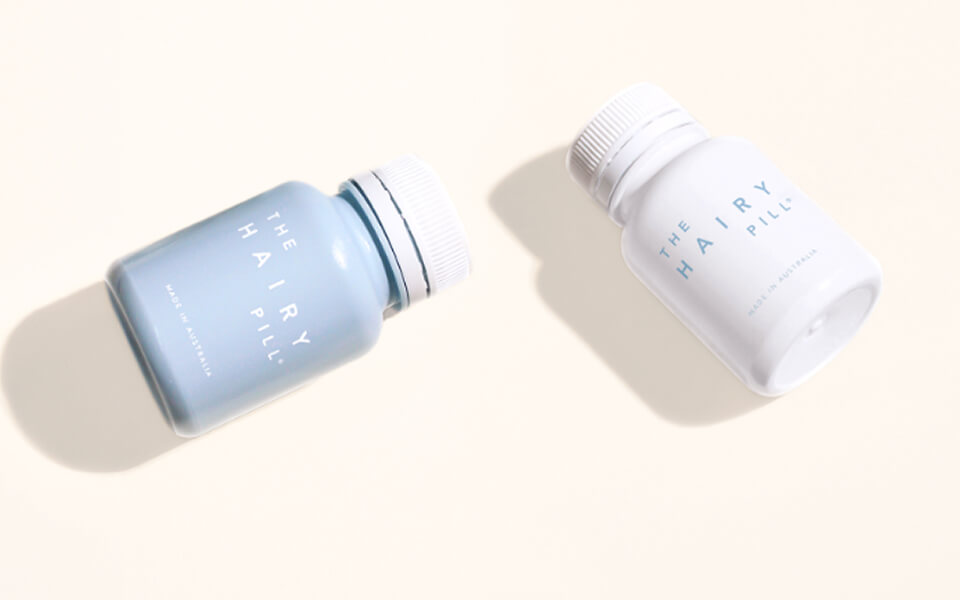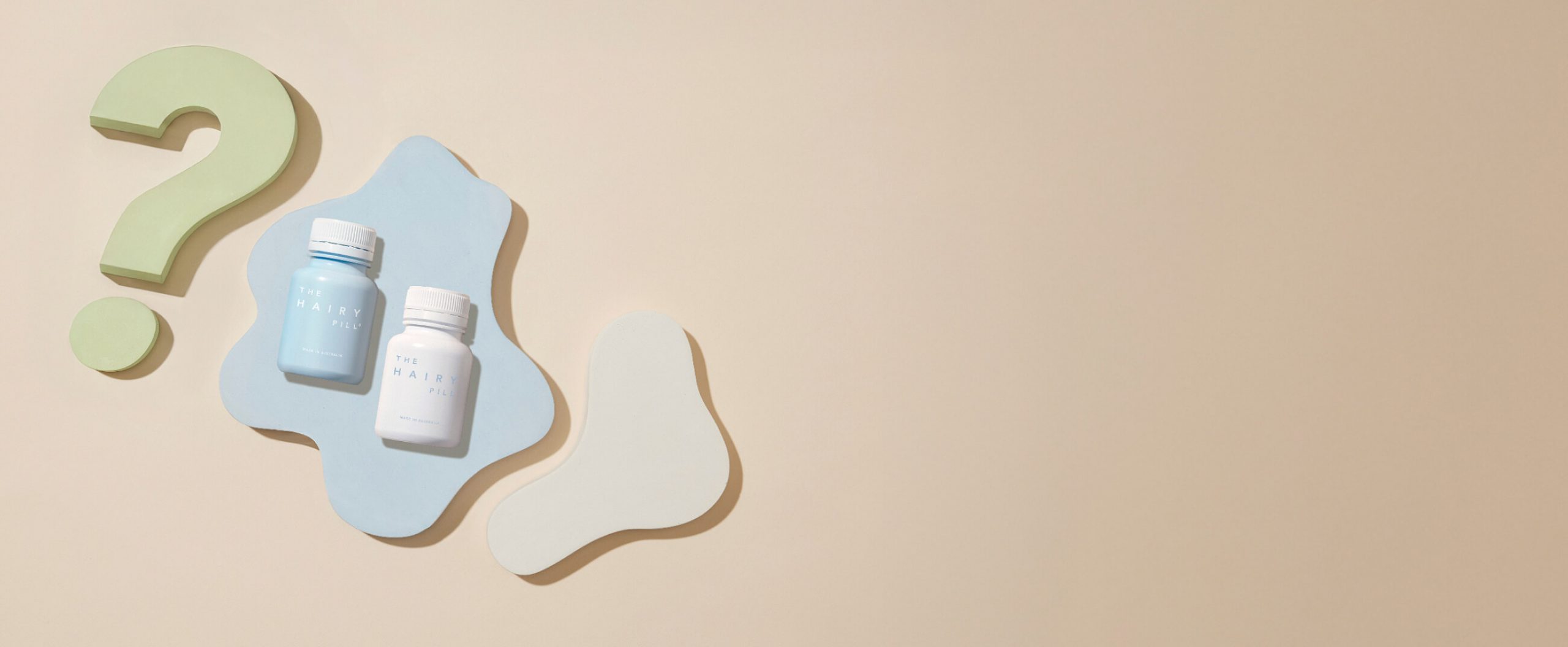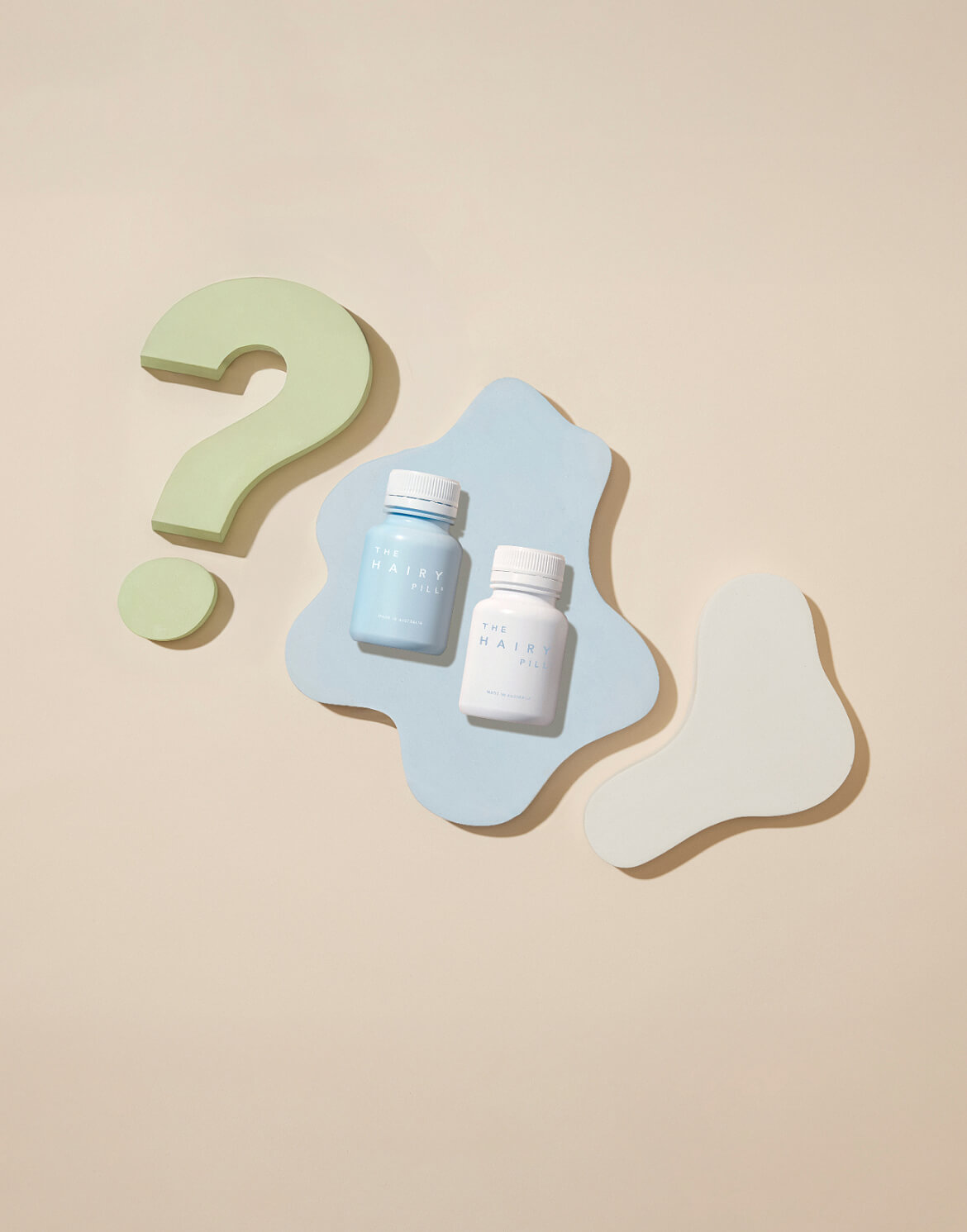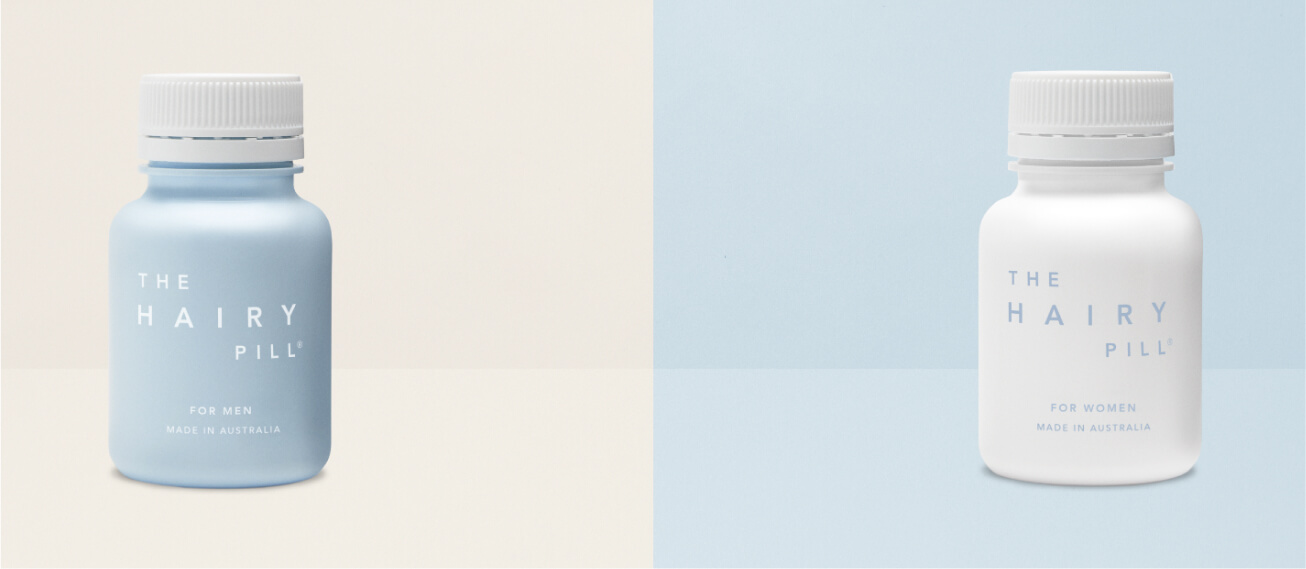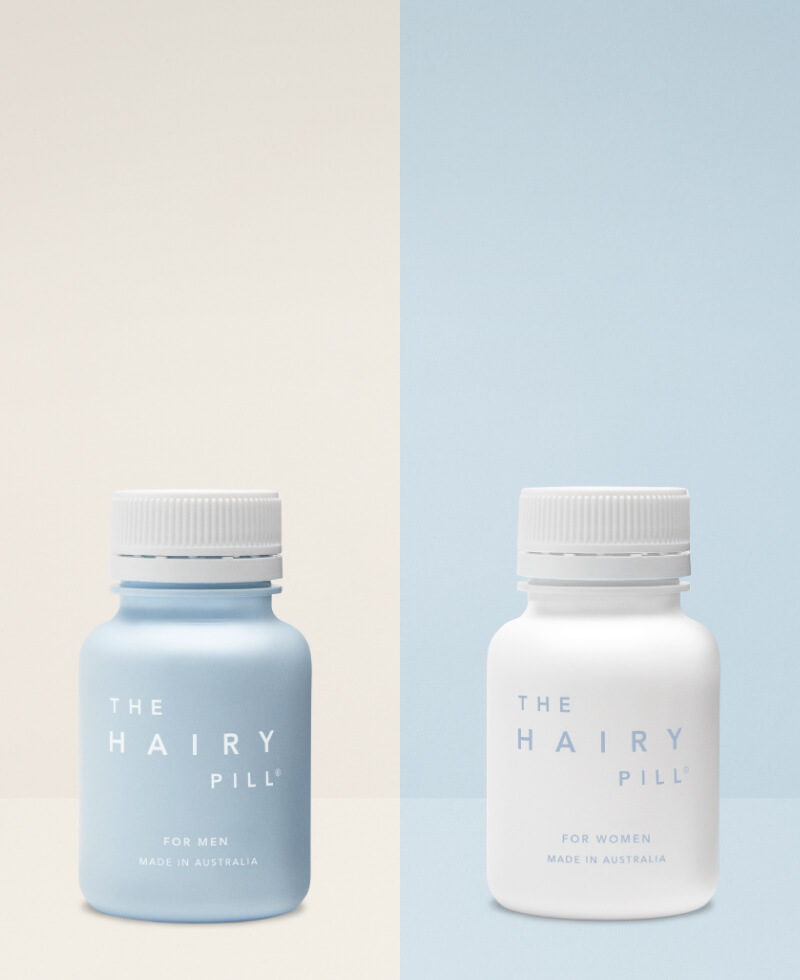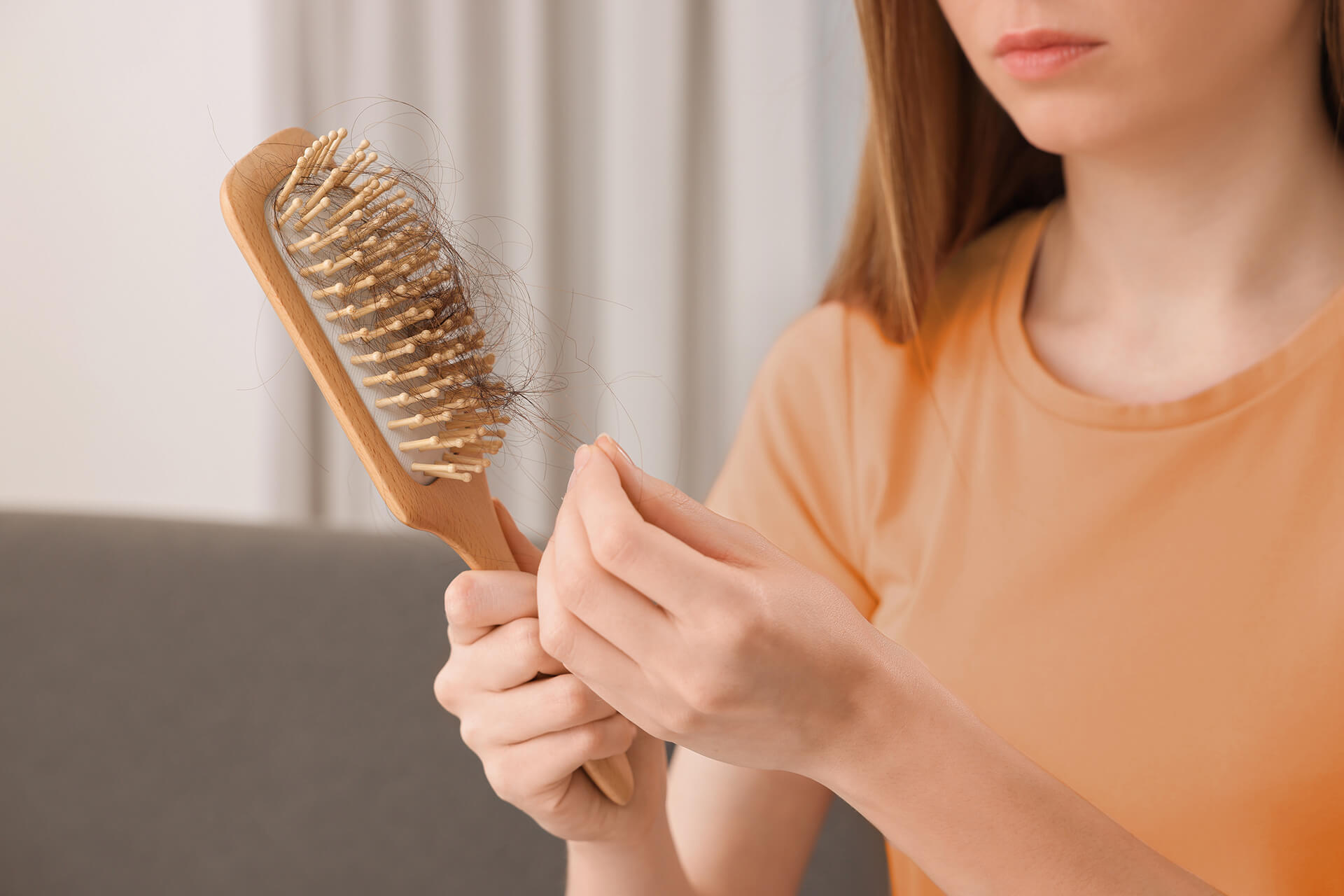Finasteride as a Hair Loss Treatment
A noticeably thinning hairline or a looser-than-usual ponytail is enough to send you to your phone to google if and why your hair is thinning and, more importantly, if there’s anything you can do to stop it (or even grow it back).
Pretty quickly, you’ll find information about finasteride, a hair loss treatment for men.
The medication, approved by Australia’s Therapeutic Goods Administration (TGA), has been one of the most popular treatments for hair loss for the last 20+ years.
Yet it’s natural to approach any medication with some healthy scepticism. So let’s take a look at finasteride, how it works, and how well it works.
What Is Finasteride?
Finasteride is a 5-alpha reductase inhibitor (often just abbreviated to 5-ARI). Simply put, it’s an oral prescription medication that is used to treat men’s hair loss — usually at a dose of 1 mg per day.
How Does Finasteride Grow Hair?
We’re going to explain how finasteride for hair loss works but for that, we need to give you a quick biology lesson.
Whether you’re male or female, your body contains testosterone and an enzyme called 5-alpha reductase (sometimes written as 5α-reductase). This enzyme turns some of your testosterone into another hormone called dihydrotestosterone (DHT).
DHT has an essential role in hair loss because it shrinks genetically sensitive hair follicles. This makes it harder for hair to grow, causing androgenetic alopecia (or hereditary pattern hair loss).
Without 5-alpha reductase, your body wouldn’t be able to produce DHT. And as we’ve established, without DHT, your hair follicles have a better chance of thriving.
Enter finasteride.
As a 5-alpha reductase inhibitor, finasteride stops 5α-reductase from converting testosterone into DHT.
As a result, finasteride decreases the amount of DHT in your body (by as much as 60–75%, according to a 1999 clinical trial), reducing the chances that it could mess with the hair on your head.
Discover if The Hairy Pill® is right for you.
Take our short hair health quiz and we will work out if The Hairy Pill® can help you and your hair.
Take the quizDoes Finasteride for Hair Loss Work?
By and large, the research shows that finasteride helps stimulate hair regrowth while stopping the progression of hair loss — particularly among men with male pattern hair loss.
Let’s look at what the studies say.
Finasteride decreases DHT levels
A 1999 clinical trial in the United States studied men with male pattern baldness who were treated with finasteride. Groups of men were given varying doses of finasteride or a placebo daily for 42 days.
Scalp biopsies were performed before and after treatment, with the results showing that doses of finasteride as low as 0.2 mg per day decrease the levels of DHT in the scalp skin and serum.
A 1 mg/day dose of finasteride reduces scalp skin DHT levels by almost 65% and serum DHT levels by more than 70%.
Finasteride stops hair loss
In 1999, a placebo-controlled New Zealand clinical study of almost 2,000 men with male pattern baldness confirmed that just 1 mg/day of finasteride was effective in stopping hair loss and promoting hair growth.
Over several years, the study conducted hair counts, with results showing that 83% of men experienced no further hair loss after 2 years, compared to just 28% of those who took a placebo.
The study also took global photographs of men with vertex hair loss, seeing improved hair growth in 48% of finasteride recipients after 1 year of use and 66% after 2 years, compared with 7% of placebo recipients.
Finasteride regrows hair
In 1998, researchers published the results of two 1-year clinical trials in the
Journal of the American Academy of Dermatology.
In a 1-year trial, the researchers studied 1,553 men who were treating male pattern hair loss with either 1 mg/day oral finasteride or a placebo. They continued following 1,215 men from the trial in the second year of treatment.
To measure the results, researchers conducted scalp hair counts, measuring a 1-inch diameter circular area of the scalp. They also looked at assessments from both patients and investigators, as well as a review of photographs by an expert panel.
The results found that after 2 years of finasteride treatment, the average hair count on the balding vertex scalp increased 16%, from 876 to 1,014 hairs per square inch.
Long-term efficacy
In 2019, the results of a long-term trial of finasteride were published. This study followed 523 Japanese men who treated hair loss with finasteride for 10 years.
During this time, data was collected through patient and doctor evaluations as well as assessments using scalp photographs. The results showed that more than 90% of men continued to see improvements after 10 years of treatment with finasteride.
Finasteride and female pattern hair loss
In 1998 in Brussels, the results of a year-long study on the effectiveness of finasteride on female pattern hair loss were presented at the Hair Workshop.
This double-blind, placebo-controlled trial studied 137 postmenopausal women (aged between 41 and 60), who were given either a 1 mg dose of finasteride or a placebo per day to treat female pattern hair loss.
Researchers assessed the results through scalp hair counts, patient and investigator assessments, assessment of global photographs by an expert panel, and histologic analysis of scalp biopsy specimens.
The study ultimately found that a 1 mg/day dose of finasteride did not increase hair growth or slow down the progress of hair thinning for women.
Male Pattern Baldness & Finasteride
Alongside topical minoxidil, finasteride is the most common treatment for male pattern hair loss (androgenetic alopecia or male pattern baldness).
This is the most common type of hair loss for men. It is also a hereditary condition.
That means that men with male pattern baldness are predisposed to have hair follicles that are sensitive to DHT. As we’ve established, DHT can cause sensitive follicles to shrink, producing:
- Shorter and finer hair
- A shorter hair growth stage
- A longer hair shedding phase
- The production of fewer hairs — or none at all
By halting the production of DHT, finasteride gives your hair follicles a chance to rest, recover, and restimulate to start regrowing hair.
Ready to start your hair growth journey?
- Free express shipping
- Unlimited doctor consultations
- Simple once a day treatment
Finasteride Side Effects to Watch for
Like most medications, including the humble paracetamol, finasteride can cause side effects. These are usually mild, affecting a tiny portion of patients, and tend to go away over time.
It’s important to talk with your doctor if you have any concerns or if finasteride side effects do not go away. If you have serious side effects, contact your doctor immediately. If you think you’re having a medical emergency, call 000.
The most common side effects of 1 mg of finasteride per day include:
- Erectile dysfunction
- Ejaculatory dysfunction
- Decreased libido
- Testicular pain or discomfort
- Changes in mood or depression
Clinical trials found that the 3 most common side effects occur in a tiny percentage of patients:
- 1.8% of patients experienced decreased libido
- 1.3% experienced erectile dysfunction
- 1.2% experienced an ejaculation disorder
These side effects usually occur early on in the treatment and can be mitigated by changing the dose or stopping treatment. Studies found that for those who chose to continue treatment, the side effects typically disappeared over time.
Rare but serious side effects occur in less than 1 in 1,000 people. Serious side effects include:
- Unusually low mood, depression, or thoughts of harming yourself
- Lumps or pain in your chest area
- Swelling of your lips, tongue, throat, or face
- Nipple discharge
Findings based on two large trials also found that taking 5 mg of finasteride daily — a dose typically far higher than that used to treat hair loss — increased the risk of developing high-grade prostate cancer from 1% to 1.8% in men over 55 years of age.
Finally, though unusual, some people may experience a serious allergic reaction (anaphylaxis) to finasteride.
IMPORTANT: Women who are pregnant or may become pregnant should not take finasteride — or even handle broken pills — as it can cause birth defects in male babies. Finasteride is rarely given to premenopausal women for this reason.
Finasteride FAQs
Finasteride is one of the most popular hair loss treatments available today, so it’s natural you’ll have further questions. We’ve answered the most common FAQs below.
Does finasteride regrow hair?
Yes, just 1 mg a day of finasteride can help regrow lost hair. A New Zealand clinical study showed that finasteride improved hair growth in 66% of men after 2 years of use.
What is the best finasteride dosage for hair loss?
The best dosage of finasteride for hair loss will always depend on the individual but the recommended dose to treat hair loss is 1 mg of finasteride per day.
While 5 mg doses of finasteride are used to treat an enlarged prostate, such high doses are not recommended for hair loss.
What is the best time of day to take finasteride?
The best time to eat finasteride pills is simply whenever you can take them consistently. Since it’s best to take medication at roughly the same time every day, it’s a good idea to integrate finasteride pills into your daily routine.
You can take finasteride with or without food. So if you think the best time of day to take finasteride is before bed, that works just as well as taking them with your morning coffee.
What is the best alternative to finasteride?
Topical minoxidil is usually offered as the best alternative to finasteride. It is available over the counter in Australia.
Minoxidil is a vasodilator, which means it opens up your blood vessels, helping to transport oxygen and essential nutrients through your bloodstream to your hair follicles.
Can you use finasteride and minoxidil together?
Minoxidil can also be taken in combination with finasteride to improve results.
Finasteride and minoxidil work in completely different ways. The former is taken orally and targets DHT levels in the body. The latter is typically applied directly to the scalp to increase blood flow to the scalp and stimulate hair regrowth.
While both medications have some level of effectiveness when used alone, a study of 100 men with male pattern baldness showed that combining the two medications often produces better results.
A 2015 Chinese study also published these results from 12 months of therapy:
- 80.5% of men taking 1 mg finasteride alone saw improvements
- 59% of men using 5% minoxidil alone saw improvements
- 94.1% of men using a combination finasteride-minoxidil therapy saw improvement
How long does Finasteride take to work?
When it comes to effective hair growth treatment, slow and steady wins the race.
Good hair loss treatments work because they target the root of the problem by rebalancing the hair growth cycle. That takes time. Most people start seeing results anywhere between 3 and 6 months.
0–3 months: It sounds counterproductive but you may notice you’re shedding MORE hair than usual. It’s a good sign. It means new hair is starting to grow and push out the old.
3–6 months: You may notice that your hair loss has halted. Your hair may even begin to thicken or show signs of regrowth. However, cycles of shedding and growth can continue as your hair growth cycle rebalances.
6+ months: Over the next 6–12 months, a consistent dose of finasteride may lead to consistent improvements in your hair growth, with noticeably thicker and stronger hair all over.
Talk to Our Men’s Hair Loss Specialists Today
Hair loss may well be a hairy subject but the improvements over the last 20 years mean you have effective treatments that your father or grandfather could only dream of.
Our understanding of hair loss — and how to treat it — has come a long way.
But just because we are familiar (slash-slightly-obsessed) with the subject doesn’t mean you would be.
You have questions. We have answers.
The Hairy Pill® hair loss treatments include ongoing consultations with partner doctors, who are under the guidance of Dr Rodney Sinclair, the world-renowned dermatologist behind the pill.
Want to know what’s in The Hairy Pill®, whether it can help you, or how long it may take to work? Our dedicated team for hair loss is only a phone call away.


